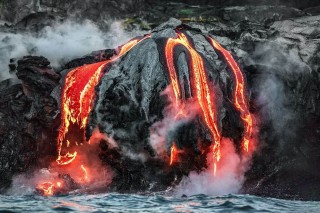The Building Of Iceland
Iceland is beautiful, beyond imagination kind of.
As a location for various blockbuster movies, it is synonymous with science fiction, primitive, wild, and adventurous.
The number of visitors coming to the country has surged from 470,000 in 2010 to 2.3 million in 2017, and of that five-fold increase, more than 83 percent said they came to Iceland to experience the awesome wild outdoors.
But is there architecture in Iceland?
Those who are asked may only look confused. People come with the initial intention of experiencing nature and leave with the satisfaction of feeling it, and some never even realize that Icelandic architecture exists.
Architecture is more like a supporting role here. Iceland, as it stands now, is still a huge wild country except for the capital - a tiny dot on the southwestern edge of the entire island - where, so to speak, "when you leave Reykjavik, there is nothing".
Tundra, ice fields, volcanic rock, and desert, there are few places on earth as beautiful and remote as Iceland. Here, architecture is so unique in form and space that whether it is a revived capital or a small town there are scenes and stories that transcend nature, culture, and environment, as well as many dramatic examples of human interaction with the raw elements of nature.
The lawn house is an organic building process where the turf tiles cut from the marshland can be replaced, usually once every 20-70 years. When no longer in use, it blends back into the natural environment, which explains why there are few preserved historic lawn houses in Iceland today.
Turf houses were used in Iceland for over a thousand years and up to the end of the 19th century, up to 50% of Icelandic homes were still partially made of turf.
In the 8th century, the Danish government began to incorporate industrial development into Icelandic society, and stone houses began to spring up across the country under official leadership, while the city of Reykjavík really began to take shape.
Although taken from Icelandic stone, these earliest Icelandic stone buildings are very similar in nature to Denmark, as most of them were built by architects from Denmark.
At the same time, along with urbanization, timber architecture emerged in Iceland, and Danish merchants living in Iceland began importing wood to build large, representative houses. The early wooden houses had high, steep roofs and low walls, and had a dark appearance due to the tarred exterior walls.
In the 960s, corrugated iron arrived on the Icelandic coast. Instead of wood imported from England, Icelandic carpenters used corrugated iron to cover the facades of Swiss Chalet-style buildings brought by the Norwegians in the late 19th century, often used in industries such as building sheds, and barns.
In Iceland, corrugated iron is used in a vertical orientation, which is more suitable for protection against rain and salt. Because the material is well suited to the local weather, it has been accepted and developed throughout the country.
The houses are unusual and aesthetically attractive because of the decorative stripes above the windows and doors and the projecting eaves with decorative end beams.
To this day, corrugated iron is still the most common roofing material in Iceland, and it is not difficult to walk down any street in Iceland and notice that the typical Icelandic home is a richly decorated shack covered with corrugated iron in a rainbow of colors.
Looking back at Iceland's long but not rich architectural history, one can clearly see the important role played by natural elements in it. Although some of the buildings may lack comfort, they are the product of the interaction between architecture and nature and are the ideal place for Iceland's rough climate.
You may like:


